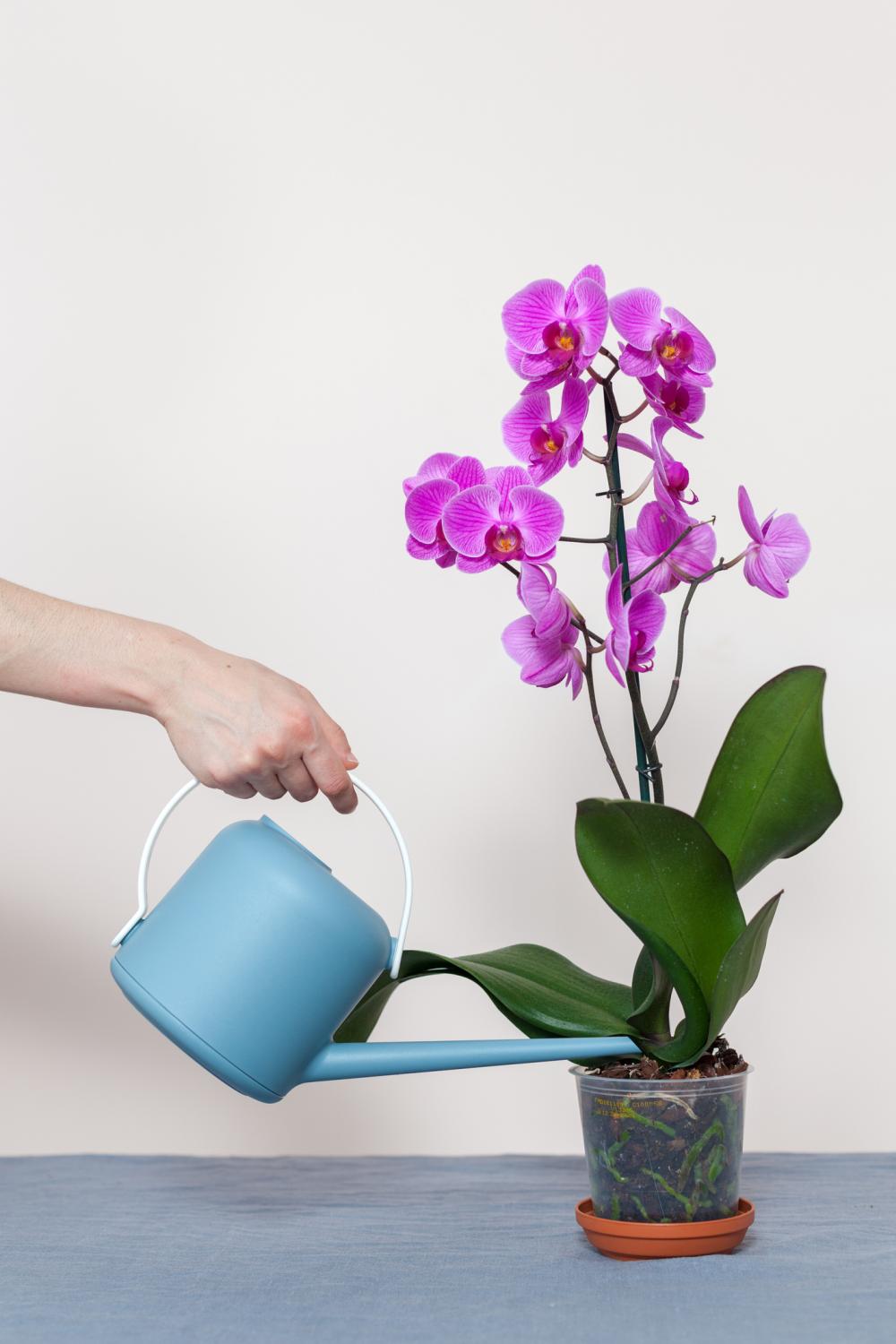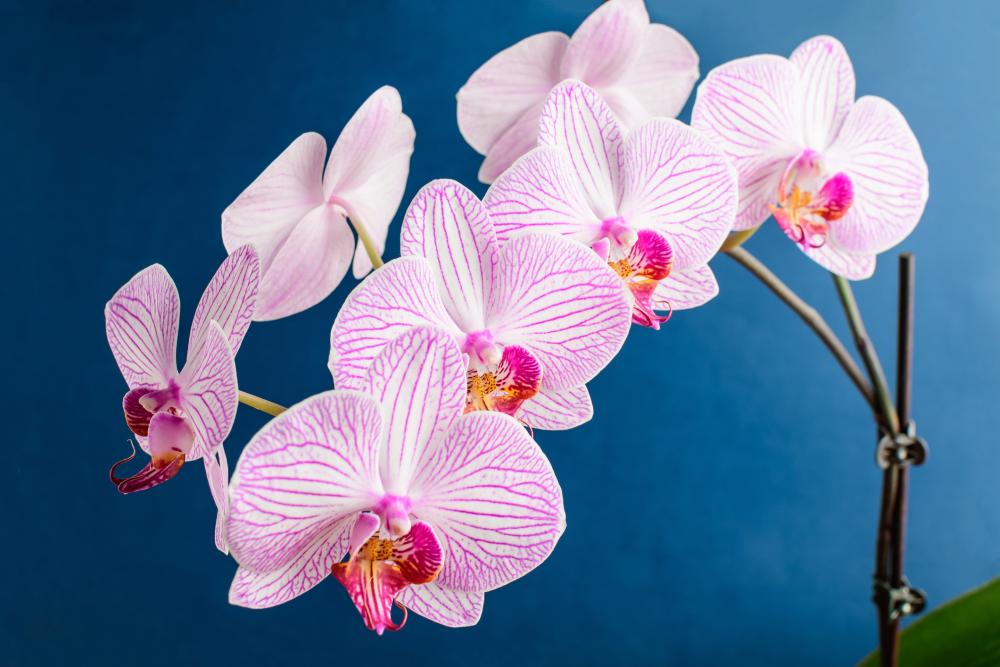Common Orchid Growing Problems: How To Keep Your Orchids Healthy
While orchids take their undeniable beauty and charm, those qualities come at a price. For starters, you have to be nearly always engaged with the young plants, giving them as much intendance and attention as you would a homo child. But unlike children that grow up and become independent, your orchids will remain dependent on y'all throughout their life.

And then there are the orchid growing issues. While well-nigh of those bug are related to the leaves, some will bear upon the buds or the crown itself. And so y'all'll have to grapple with dropping leaves, sticky leaves, dropping buds, and the occasional crown rot. Not to mention wintering the plants when the weather turns cold. Read on to discover out how to deal with each and every one of those orchid growing problems and how to proceed your plants healthy.
Dropping Orchid Leaves
While most houseplants and even those growing the garden tend to lose some of their leaves, information technology's oftentimes done at a tedious rate and with a tiny fraction of the overall leafage. So if you lot see one of two leaves have fallen in the pot, that should exist no cause for business for you. This is only the orchid's way of refreshing its foliage and growing new leaves. Out with the old and in with the new.
But when half the foliage drops all at once, and the plant looks about bare, and then you accept a problem on your easily. And before you exercise anything, you need to check the conditions around the potted plant. Is the soil already dried out? Did you use the wrong type of fertilizer, peradventure? Or perhaps the plant is under attack by pathogens eating out its roots and blocking the inner vessels that conduct nutrients and moisture to the leaves?
How to Fix It
Naturally, each i of those three reasons requires a different solution. Irregular watering habits can put the orchid under a lot of stress that forces information technology to shed its leaves as a survival defense force machinery. Then hither's how to deal with each situation and bring the orchid dorsum to health.
- Water Issues: With so many orchid varieties out there, you might exist justified in giving the plant more than or less h2o than it actually needs. This is why you should ask the plant nursery where y'all got the orchid nigh the specific h2o requirements of your variety. Adjust your irrigation appropriately. Nonetheless, virtually orchids prefer deep watering until it runs out of the drainage holes.
- Wrong Fertilizer: Feeding the orchids with the wrong type of fertilizer or neglecting to provide plant nutrient supplements can cause the leaves to fall. Case in point, potassium deficiency tin can be a factor in leaf dropping among different orchid types. Y'all should also use liquid fertilizers instead of granular types and cut down the fertilizer at a 50 pct forcefulness. You should always apply the fertilizer on moisture soil to further dilute the substance and protect the orchid confronting the shock that a potent fertilizer would cause. And when in doubt, err on the side of less fertilizer.
- Diseases: It'south not uncommon for the orchid to accept a fungal infection or a bacterial affliction. In astringent cases, the leaves might fall, which is a bad sign since the orchid might die shortly after if yous don't arbitrate. Crown root rot is 1 such affliction that could be lethal for the orchid. There's a whole department beneath most this common orchid illness.
Winter Orchid Requirements

Beingness a tropical perennial found, orchids need wintertime preparation and a lot of protection. If left to their own devices, the plants might succumb to the starting time frost or become through some severe damage in the freezing temperatures of the cold wintertime months.
There'southward a myth surrounding the hardiness of these plants. Some people claim that orchids can survive cold temperatures. But since you're growing an ornamental plant, and not putting it through rigorous training to toughen it up, you should strive to make your orchid as comfortable as possible. And i of the tenets of orchid comfort is preparing the plants for the long winter months ahead.
Even if you're keeping the orchid indoors every bit a houseplant, you lot should always make sure that the temperature during daytime doesn't driblet beneath 50 degrees F. Information technology tin rise to 80 degrees F. during the summer months. But dank conditions can impairment the plant.
How to Fix Information technology
Many orchid growers don't realize that even if the plant is sitting comfortably on a window sill, it can still go exposed to cold temperatures. A airtight window can yet go too common cold and hurt the potted found. Here are a few steps you can take to protect the orchids during the wintertime.
- Maintain the room temperature during the winter so that it stays above 50 degrees F. both mean solar day and dark.
- Don't keep the potted plant adjacent to a window unless in that location's a warm sunday coming in.
- Don't place the institute near a radiator or expose it to cold drafts coming through an open window or door.
- Since the light conditions get worse during the wintertime, place a sunday lamp in the room nigh the establish and turn it on 8 hours a day.
- Avoid watering the potted orchid too much since it is not growing, and so it has no need for regular watering patterns.
- Orchids get into dormancy during the wintertime, so don't feed them and cutting back watering to let the top 3 inches of the soil to dry out completely betwixt irrigations.
Crown Rot In Orchids
Crown rot is the kind of illness that is totally avoidable. In 9 cases out of 10, crown rot is the result of a homo mistake and not a pathogen that sneaks on the establish and ruins it. Then what is crown rot? The crown of the orchid is the part of the found that connects the roots to the leaves. You can recollect of it as the torso of the establish. It'southward packed with vessels and pathways that send nutrients and moisture from the roots upwards to the leaves and flowers.
When watering the potted plant, there's always a take a chance that some stray h2o droplets will land on the basin of the orchid where the leaves meet the crown. This brackish water becomes a breeding ground for a lot of pathogens that crusade the crown to rot.
How to Fix Information technology
Since orchid crown rot is a human being mistake, that ways it tin can be prevented by following the proper orchid care guidelines. However, fifty-fifty if crown rot sets in, there'south all the same a pathway for you to salvage the institute and bring information technology back to life. So how would you fix the problem and prevent it from happening in the beginning place?
- Gear up Orchid Crown Rot: To bring an orchid suffering from crown rot back to health, apply hydrogen peroxide on the infected part of the institute. Don't dilute the liquid and but apply it in minuscule doses to preclude dissentious the good for you parts of the crown. Repeat this process twice or 3 times a day for a week or until the plant heals.
- Prevent Orchid Crown Rot: Considering water on the crown is the main cause of crown rot, you should dry out out the basin with a sponge or paper towel every time y'all water the constitute. Also, dry out out whatsoever moisture on the leaves. As for watering the orchid, you lot should follow the instructions provided by the local nursery where y'all got the orchid diversity. In general, y'all should allow the top one inch of the soil to dry out during the leap and summer and the elevation 3 inches to go fully dry out during the plant'south dormancy in the winter.
Sticky Orchid Leaves

Ornamental plants such as orchids need to await their best every day, all yr circular. You won't tolerate the plant going haywire with leaves and stems growing wildly. And you won't like it if the leaves plough xanthous, droop, or even fall off the found. So what would happen if gluey goo creeps over the surface of the leaves and covers their natural beauty under its slimy substance? You'll probably go into panic style and start frantically calling your local nursery.
Merely at that place'south no need for that. First, you demand to examine the sticky substance. If information technology's clear, so there's no need to practice anything. But if information technology's murky or dark looking, then it might be the secretion of pests such as mealybugs and aphids. Just if you tin't stand the sight of pasty goo dripping off the leaves no matter its color, and then you need to accept activeness.
How to Prepare It
Orchids know how to attract pollinators to their flowers. They practice that by covering the leaves with a sweet and sticky substance that many insects discover irresistible. Just this same goo too attracts other pests which can cause damage to the plant and whose mere presence in your house means you must take left a window open somewhere. Then what tin you do about the pasty orchid go?
- To tell the departure between natural orchid sap and pest goo, wait for ants. Ants are attracted to the sticky trails of honeydew left by aphids, calibration, and mealybugs. If you run into ants on the leaves, spray the institute with neem oil or care for information technology with a swab soaked in rubbing alcohol. You'll also be getting rid of the ants in the process.
- Yous should clean honeydew patches as soon as y'all see them since they deed as farms for sooty mold which can cause serious damage to the leaves and flowers of the orchid.
- If the goo is black or dark brown, your orchid might have a bacterial infection. Remove all infected parts of the plant and dispose of them safely before they spread to the residuum of the orchid. If most of the plant is infected, you'll accept to condemn it and start a new plant in a new pot with fresh soil.
Orchid Buds Dropping
The last thing whatever orchid grower would similar to hear is that the orchid buds are dropping. While the leaves of the constitute accept their decorative values, the flowers are by far the most important part. And so when the orchid buds start dropping, you accept to find out what'due south going on and how you can stop information technology to preserve some blooms for the season.
How to Fix It
Orchid bud blast is more mutual than y'all call back. And it often has to practise with the growing conditions more than than a pathogen wreaking havoc with the orchid. To prevent information technology from happening, here's what to do.
- Choose the right potting mix for the orchid. Don't use regular soil and opt instead for a potting mix with plenty of bark shreddings.
- Make sure the orchid is getting 8 hours of sunlight during the growing season.
- Mist the plants daily during the summertime months since dry air can cause orchid bud blast.
- To encourage the plant to blossom, reduce the nighttime temperature by virtually 20 degrees F from daytime temperatures.
- Don't overwater the plant and allow the topsoil to dry out betwixt irrigations.
Source: https://www.diys.com/orchid-growing-problems/
Post a Comment for "Common Orchid Growing Problems: How To Keep Your Orchids Healthy"